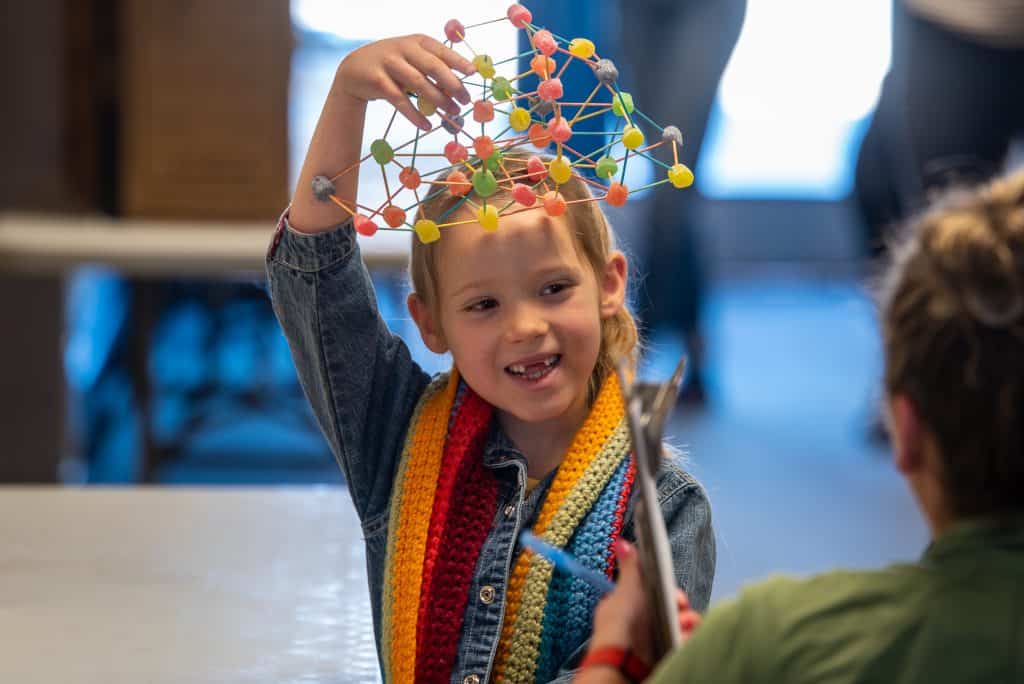
Hygiene Elementary School recently hosted its annual STEAM Fair, providing students with the opportunity to demonstrate their creativity and problem-solving skills. The event integrates Science, Technology, Engineering, Arts, and Mathematics (STEAM) to promote critical thinking and innovation. Hygiene’s Parent Teacher Organization (PTO) helps organize, sponsor, and implement the fair, and professional scientists and designers from the community lead the judging and scoring of the projects.
Students selected either a scientific method project that directly tests a formulated scientific hypothesis, or a design thinking project that evaluates solutions to an identified problem for a specified user or group. Approximately six weeks prior to the STEAM Fair, professional scientists visited each classroom to engage with students and generate interest in STEAM topics. During these visits, they conducted a small experiment while explaining the phases of the scientific method.
Third-grader Caleb Worosylo, who opted for the design thinking approach, invented an inflatable emergency evacuation slide intended to save pets’ lives during a fire. Adding a personal touch to his presentation, he proudly wore a t-shirt displaying a photo of Tres, one of his dogs. Caleb shared his inspiration for the project, stating, “I have three dogs and I was inspired by them. My uncle is a firefighter, so that made me think if there was a fire blocking all the doors downstairs and we couldn’t get out, my family could use a ladder, but the dogs would have to use something else.”

From studying the buoyancy of boats to investigating the impact of different music genres on plant growth, to examining bacterial growth on food, each project demonstrated the students’ ingenuity and creativity in the fields of STEAM.
“Students typically create their projects at home with their family members, or friends,” shared Dr. Rachel Rowe, an Assistant Professor of Sleep, Inflammation, and Neuropathology at University of Colorado Boulder and STEAM Fair judge. “However, a classroom project is also an option, in which students in a teacher’s class collectively develop and work on a project together. This year, both first grade teachers submitted classroom scientific method projects that their students collaboratively worked on.”
On the day of the STEAM Fair, students presented their projects to the judges, who evaluated and scored the entries to determine the winners. “Scientific method projects are judged based on the question, research, hypothesis, experiment, data and analysis, and conclusion phases of the scientific method,” said Dr. Sean Murphy, a Research Biologist for the Western Ecological Research Center at U.S. Geological Survey and STEAM Fair judge. “Design thinking projects are judged based on the empathy, define, ideate, prototype, testing, and discussion phases of the design method.”
After the judging, an open house was held at Hygiene, where students’ families, friends, and community members had the opportunity to admire the projects and participate in discussions about various STEAM topics. The fair concluded with students reflecting on their projects and considering potential improvements.
“I am incredibly grateful for the dedication of our PTO in organizing the STEAM Fair and providing our students with this valuable experience,” shared Hygiene Principal Renee Collier. “We are also fortunate to have judges who generously volunteer their time to evaluate the projects. Their expertise and support are invaluable. I’m very proud of our students for their hard work and creativity.”


